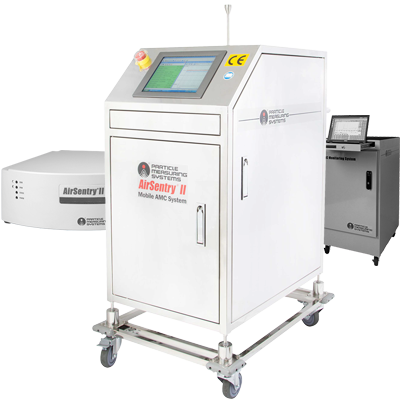Thanks for joining us in this latest blog series on airborne molecular contamination (AMC) in lithography processes. This time, we bring it all together to understand how the latest technology for monitoring AMCs can cut down on defects and increase efficiency and performance of optics manufacturing.
What changes should I consider?
To make collection and illumination optics for wafer inspection tools, optics manufacturers have been modifying fabrication methods and cleaning and coating processes to meet the strict material and cleanliness requirements required for DUV and EUV qualification. One such manufacturer of optical components and sub-systems for both EUV and DUV tool processes is Excelitas Technologies—a technology leader in delivering high-performance, market-driven photonic innovations to meet the lighting, optronic, detection and optical technology needs. Excelitas has recently:
- Implemented changes in their optics manufacturing functional area where components and sub-systems are made and integrated into optical metrology tools using DUV light
- Invested significantly in specialty equipment to control Airborne Molecular contamination (AMC)
Specialty equipment you may consider includes:
- AMC flow benches for cleaning, inspecting, and packaging optics, used to test whether AMC filters and air flow scheme could sustain AMC levels
- Specially-constructed N2 purge cabinets for storage of tooling and optics between manufacturing steps
- Chemical getters for N2 lines feeding coating chambers and blow-off guns
- Direct support from the Particle Measuring Systems Applications Engineering team was utilized for Mobile Cart setup, calibration, and operation to ensure data integrity as well as support with data analysis and interpretation.
Consider a Continuous Airborne Molecular Contamination (AMC) Monitoring Approach
For monitoring and qualifying the DUV systems and processes, Excelitas implemented:
- Continuous AMC monitoring of total acids and total amines via Particle Measuring Systems’ (PMS) AirSentry® II Mobile Cart
- Tested optical surfaces at various stages of production for surface particle contamination.
- Instituted regular PMs for testing room and purge cabinet air for VOCs
A typical Define, Measure, Analyze, Improve, Control (DMAIC) approach was used to first determine baseline AMC levels in the clean spaces of concern. A detailed map of total acids and amines AMC was created using the Particle Measuring Systems AMC Mobile Cart. This map included an area to be dedicated for DUV part cleaning and storage.
Test Setup
For sampling in DUV areas, the standard mobile cart sample inlet port was connected to an adapter with approximately 3 meters of 1/4-inch OD PFA tubing that could be easily oriented to better sample local environments. The graph below shows a time-chart graph of AMC levels over a period of a week.
- During the first half of the week, tubing was placed inside the “AMC Flow Bench”.
- For the latter part of the week, tubing was moved around 1.5 feet outside the flow bench to the “Transfer Zone”, where exposed components are regularly moved from the bench to an N2 purge cabinet.
AMC sample mapping in the transition area was instrumental to determine whether any additional AMC filtration (and possible air handling system reconfiguration) would need to be implemented during the Improve and Control phase of the DMAIC effort.
Test Results
Measurements showed that inside the AMC bench, amines and acids consistently remain below 1 ppb over a period of several days. This is acceptable for making high fluence DUV optics. Outside the bench, amines and acid levels increase to as high as almost 3 ppb each. While levels outside the AMC bench are sufficient for handling a medium fluence optic, manufacturing high fluence optics will require a greater level of AMC control in the room such as molecular filtration to supplement the particulate (HEPA) filtration already in place. Keeping optics protected from AMC whenever these are transported outside the flow bench is also key.
Continuous Airborne Molecular Contamination Monitoring Solutions
The AMC Mobile Cart mapping test assisted with AMC filtration. An isolated air handling scheme could also benefit if it is to be used as intended to manufacture or clean components and sub-systems to be integrated into in the optical DUV OEM tool. For the purpose of long-term AMC control and sustaining, Excelitas has installed two AirSentry II Total Amines and Total Acids Point of Use Analyzers. The 24/7 real-time POU analyzers sampling scheme is part of the comprehensive AMC control plan to deliver lenses of optimal performance to litho and Metrology Tools OEMs.
Thanks for joining us in this blog series on AMC control in lithography applications. Reach out to us to learn more about AirSentry® II AMC monitoring, and download the full paper this blog series covered.
Ready to get started with Airborne Molecular Contamination (AMC) monitoring?
Get a Quote
 AirSentry II Airborne Molecular Contamination Monitoring Solutions
AirSentry II Airborne Molecular Contamination Monitoring Solutions
The AirSentry II AMC solution comes in 3 models:

